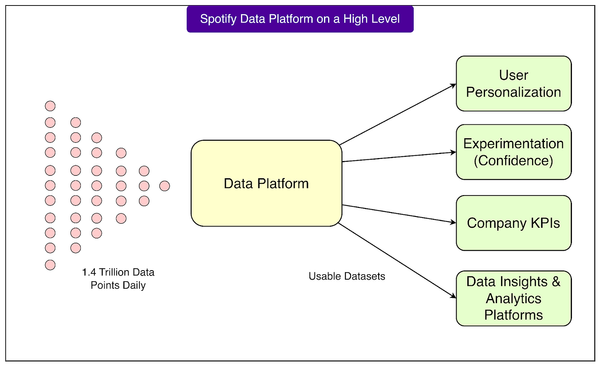How AI Startups Can Effectively Analyze Competitors — Avoid the Feature List Trap and Redefine Your Battleground


Competitive Analysis Is Not “Feature Comparison” — It’s Strategic Positioning
This guide explains how AI startup teams can escape the trap of feature lists. Using concepts from user perception, product pacing, and capital narratives, we’ll build a cognitive framework for understanding competitors — and help you identify your differentiated battlefield in a crowded market.
---
> "So, what makes you different from them?"
> Every AI startup will inevitably face this question — from investors, customers, and even their own team members.
For AI startups, competitive analysis is unavoidable.
The common mistake:
Opening a competitor’s website → listing features → building comparison tables → hoping “we have what they don’t” will be enough.
Why this fails:
It ignores deeper questions:
- Are you solving the same type of problem?
- Do your users operate in the same mental dimension?
- Are you building system-level capabilities or just aggregating features?
For AI products that aim to transform industries, workflows, or entire scenarios, “feature-based analysis” can induce self-defeating friction and block you from seeing the real competition.
---
Mindset Shift: Your Rival Is Not Just “That Similar-Looking App”
Why Traditional Analysis Fails in AI
- You’re replacing workflows, not optimizing tools
- SaaS once meant faster editors or niche CRMs. AI startups often replace entire fragmented processes — combining labor, disconnected tools, and chaotic workflows into one intelligent system.
- Your biggest enemy is invisible inertia
- Customers may currently rely on messy combinations of Excel, group chats, meetings, and manual searches. Habitual inefficiency can be harder to beat than any competitor’s app.
- You might be creating a new category
- If your product solves a never-before-addressed problem, forcing comparisons with similar-looking tools muddies your unique value.
---
A Strategic Framework: Three-Layer Competitor Model
Forget the feature grids. See competitors through three layers:
Third Layer (≈5% Threat): Direct Competitors
- Definition: Same target customers, same problem.
- Approach:
- Early stage → focus on positioning
- Mid stage → focus on system design
- Long term → build moat + ecosystem
Second Layer (≈15% Threat): Indirect Competitors
- Definition: Tools solving one specific pain point.
- Approach: They educate the market and prove willingness to pay — but you must show how your integrated solution delivers broader, systemic value.
First Layer (≈80% Threat): Substitutes / Old Workflows
- Definition: Spreadsheets, chat threads, email chains, meetings, low-paid manual labor.
- Approach: Analyze entrenched workflows as if they were powerful rivals:
- Where do they waste the most time?
- Where do errors constantly occur?
- Where is communication most costly?
- Your product must deliver order-of-magnitude gains or users won’t abandon the old method.
---
Methodology: Competitive Analysis in Three Dimensions
Dimension 1: Value Positioning — What Are We Actually Paid For?
Focus: Compare the core value propositions of you vs. competitors.
Case:
Competitor value = Efficiency improvement (faster existing workflow)
Your value = Empowerment & reconstruction (new capabilities, fundamentally new ways of working)
Conclusion: Different value dimensions mean you’re not in the same arena.
---
Dimension 2: User & Scenario Layer — Who Exactly Are We Helping?
Focus: Compare target user profiles and core business scenarios.
Case:
You: Intelligent contract review for risk control teams in law firms.
Competitor: Automated contract summary for legal assistants.
Conclusion: Your opponent is the user’s old workflow, not another tool.
---
Dimension 3: System Capability Layer — Is Our Moat a Function or an Ecosystem?
Focus: Compare point-based features vs. system-oriented capabilities.
Case:
You: AI-driven collaborative content production pipeline, fully integrated and data-feedback driven.
Competitor: Single-purpose formatting tool.
Conclusion: Single features can be copied; system moats are hard to replicate.
---
Action Guide: From Features to Value Models
Step 1: Draw the Opponent’s Real Workflow
Interview 3–5 target customers and map their process:
- Number of steps
- Number of roles
- Data breakdown points
- Repeated communications
- Time & people needed per cycle
This existing workflow is your true competitor.
---
Step 2: Define Your Value Equation
Avoid “We have one more feature”.
Instead, define commercial outcomes, e.g.:
- Reduce 3-day review cycle to 0.5 days
- Avoid non-compliance risks
- Boost content productivity 5×, turning cost into growth
---
Step 3: Build Your Moat Narrative
Outline systemic advantages:
- Workflow integration
- Data flywheel (AI learns continuously from usage)
- Migration cost (hard for clients to leave once fully onboarded)
---
Conclusion
AI is reshaping not just tools — but entire ecosystems.
For startups, replace feature-based thinking with system-capability positioning.
New-generation platforms like AiToEarn官网 illustrate this: combining AI content generation, cross-platform publishing, analytics, and model ranking in a single ecosystem. They show how integrated systems create true moats in the AI era.
---
———— / E N D / ————

---
Recommended Reading



---
If you'd like, I can also rewrite the "three dimensions" case studies into sharper bullet points for quick investor presentations. Would you like me to go ahead with that?




